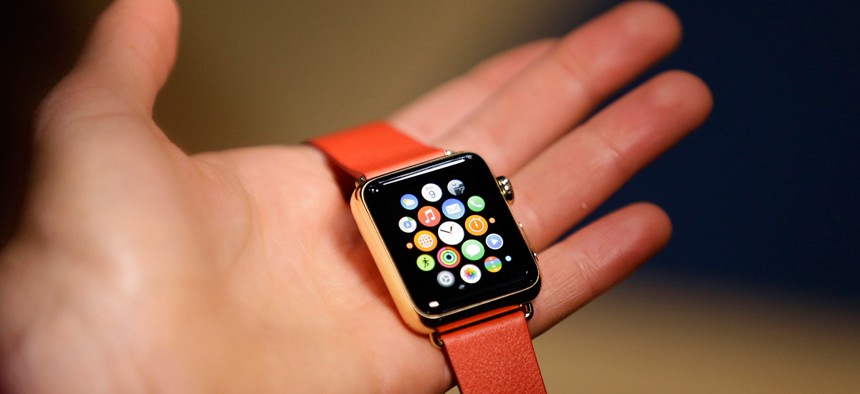How the Apple Watch May Have Saved This Man’s Life

A woman holds the Apple Watch Edition during a demo following an Apple event Monday, March 9, 2015, in San Francisco. Eric Risberg/AP
The smartwatch gathered the user's heart beat data
Ken Robson, 64, was visiting his son in San Diego, California when he started feeling weak and light-headed. Whenever that happened, he noticed his Apple Watch was showing a severe decline in heart rate.
“Your heart rate doesn’t go into the 30s and 40s unless you’re an Olympic athlete,” Robson told MedCity News.
The next day he went to the emergency room at Scripps Mercy Hospital, where he told the staff that he had researched online and believed he had sick sinus syndrome—which causes an arrhythmic beating of the heart and can turn life-threatening quickly—and he had two weeks of data on his Apple Watch to prove it.
Usually, to confirm a sick sinus syndrome diagnosis, a patient has to wear a heart monitor for a week to gather data. Moreover, a correct self-diagnosis by reading information on the internet is rare. And doctors usually don’t accept data from a device that hasn’t been clinically validated, because the data may be spurious.
At the hospital, Eric Topol—a cardiologist and a proponent of digital health—checked Robson’s claim with a medical-grade heart monitor.
“I was watching my heart rate on my watch while they were watching on a medical-grade monitor, and they synched up,” according to Robson. Topol decided that Robson was indeed suffering from the syndrome.
He got Robson into the surgery and implanted a pacemaker to bring his heart rate back to normal. Robson was allowed to leave the next day.
“My son’s a bartender,” Robson told MedCity News. “We went to the bar and had a drink.”
A lot of gadgets often turn out to be gimmicks—in most cases, even the Apple Watch. But if used right, it can sometimes save a life.
NEXT STORY: Spectrum sharing is no simple matter





